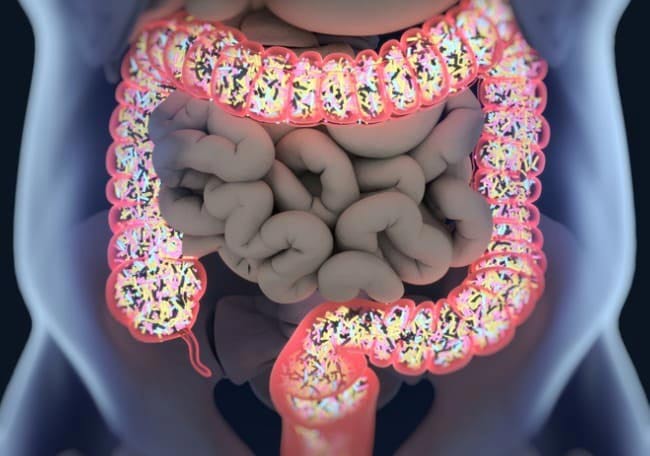Aditivos alimentarios y salud infantil

1. Neltner TG, Kulkarni NR, Alger HM, et al. Navigating the U.S. Food Additive Regulatory Program. Compr Rev Food Sci Food Saf. 2011;10(6):342–368
2. Neltner TG, Alger HM, O’Reilly JT, Krimsky S, Bero LA, Maffini MV. Conflicts of interest in approvals of additives to food determined to be generally recognized as safe: out of balance. JAMA Intern Med. 2013;173(22):2032–2036
. Neltner TG, Alger HM, Leonard JE, Maffini MV. Data gaps in toxicity testing of chemicals allowed in food in the United States. Reprod Toxicol. 2013;42:85–94
4. Landrigan PJ, Goldman LR. Children’s vulnerability to toxic chemicals: a challenge and opportunity to strengthen health and environmental policy. Health Aff (Millwood). 2011;30(5):842–850
5. US Food and Drug Administration. Update on bisphenol A for use in food contact applications: January 2010. Available at: https://www. fda.gov/downloads/NewsEvents/ PublicHealthFocus/UCM197778.pdf. Accessed May 18, 2017
6. Sathyanarayana S. Phthalates and children’s health. Curr Probl Pediatr Adolesc Health Care. 2008;38(2):34–49
7. Forman J, Silverstein J; Committee on Nutrition; Council on Environmental Health; American Academy of Pediatrics. Organic foods: health and environmental advantages and disadvantages. Pediatrics. 2012;130(5): Available at: www.pediatrics.org/cgi/ content/full/130/5/e1406
8. Buck RC, Franklin J, Berger U, et al. Perfluoroalkyl and polyfluoroalkyl substances in the environment: terminology, classification, and origins. Integr Environ Assess Manag. 2011;7(4):513–541
9. US Food and Drug Administration. Filing of food additive petition. Fed Regist. 2015;80(50):13508–135
10 . IARC Working Group on the Evaluation of Carcinogenic Risks to Humans. IARC monographs on the evaluation of carcinogenic risks to humans. Ingested nitrate and nitrite, and cyanobacterial peptide toxins. IARC Monogr Eval Carcinog Risks Hum. 2010;94:v–vii, 1–412
11. Gore AC, Chappell VA, Fenton SE, et al. Executive summary to EDC2: the Endocrine Society’s second scientific statement on endocrinedisrupting chemicals. Endocr Rev. 2015;36(6):593–602
12. Rubin BS. Bisphenol A: an endocrine disruptor with widespread exposure and multiple effects. J Steroid Biochem Mol Biol. 2011;127(1–2):27–34
13. Ehrlich S, Williams PL, Missmer SA, et al. Urinary bisphenol A concentrations and early reproductive health outcomes among women undergoing IVF. Hum Reprod. 2012;27(12):3583–3592
14. Cantonwine DE, Hauser R, Meeker JD. Bisphenol A and human reproductive health. Expert Rev Obstet Gynecol. 2013;8(4)
15. Howdeshell KL, Hotchkiss AK, Thayer KA, Vandenbergh JG, vom Saal FS. Exposure to bisphenol A advances puberty. Nature. 1999;401(6755):763–764
16. Vandenberg LN, Maffini MV, Wadia PR, Sonnenschein C, Rubin BS, Soto AM. Exposure to environmentally relevant doses of the xenoestrogen bisphenol-A alters development of the fetal mouse mammary gland. Endocrinology. 2007;148(1):116–127
17. Welshons WV, Nagel SC, vom Saal FS. Large effects from small exposures. III. Endocrine mechanisms mediating effects of bisphenol A at levels of human exposure. Endocrinology. 2006;147(6 Suppl):S56–S69
18. Jukic AM, Calafat AM, McConnaughey DR, et al. Urinary concentrations of phthalate metabolites and bisphenol A and associations with follicularphase length, luteal-phase length, fecundability, and early pregnancy loss. Environ Health Perspect. 2016;124(3):321–328
19. Masuno H, Kidani T, Sekiya K, et al. Bisphenol A in combination with insulin can accelerate the conversion of 3T3-L1 fibroblasts to adipocytes. J Lipid Res. 2002;43(5):676–684
20. Hugo ER, Brandebourg TD, Woo JG, Loftus J, Alexander JW, BenJonathan N. Bisphenol A at environmentally relevant doses inhibits adiponectin release from human adipose tissue explants and adipocytes. Environ Health Perspect. 2008;116(12):1642–1647
21. Sakurai K, Kawazuma M, Adachi T, et al. Bisphenol A affects glucose transport in mouse 3T3-F442A adipocytes. Br J Pharmacol. 2004;141(2):209–214
22. Vom Saal FS, Nagel SC, Coe BL, Angle BM, Taylor JA. The estrogenic endocrine disrupting chemical bisphenol A (BPA) and obesity. Mol Cell Endocrinol. 2012;354(1–2):74–84
23. Braun JM, Kalkbrenner AE, Calafat AM, et al. Impact of early-life bisphenol A exposure on behavior and executive function in children. Pediatrics. 2011;128(5):873–882
24. Sathyanarayana S, Braun JM, Yolton K, Liddy S, Lanphear BP. Case report: high prenatal bisphenol A exposure and infant neonatal neurobehavior. Environ Health Perspect. 2011;119(8):1170–1175
25. Ejaredar M, Lee Y, Roberts DJ, Sauve R, Dewey D. Bisphenol A exposure and children’s behavior: A systematic review. J Expo Sci Environ Epidemiol. 2017;27(2):175–183
26. Mustieles V, Pérez-Lobato R, Olea N, Fernández MF. Bisphenol A: Human exposure and neurobehavior. Neurotoxicology. 2015;49:174–184
27. Gray LE Jr, Ostby J, Furr J, Price M, Veeramachaneni DN, Parks L. Perinatal exposure to the phthalates DEHP, BBP, and DINP, but not DEP, DMP, or DOTP, alters sexual differentiation of the male rat. Toxicol Sci. 2000;58(2):350–365
28. Meeker JD, Ferguson KK. Urinary phthalate metabolites are associated with decreased serum testosterone in men, women, and children from NHANES 2011-2012. J Clin Endocrinol Metab. 2014;99(11):4346–4352
29. Swan SH, Main KM, Liu F, et al; Study for Future Families Research Team. Decrease in anogenital distance among male infants with prenatal phthalate exposure. Environ Health Perspect. 2005;113(8):1056–1061
30. Desvergne B, Feige JN, Casals-Casas C. PPAR-mediated activity of phthalates: a link to the obesity epidemic? Mol Cell Endocrinol. 2009;304(1–2):43–48
31. Trasande L, Attina TM. Association of exposure to di-2-ethylhexylphthalate replacements with increased blood pressure in children and adolescents. Hypertension. 2015;66(2):301–308
32. Attina TM, Trasande L. Association of exposure to di-2-ethylhexylphthalate replacements with increased insulin resistance in adolescents from NHANES 2009-2012. J Clin Endocrinol Metab. 2015;100(7):2640–2650
33. Ferguson KK, Loch-Caruso R, Meeker JD. Urinary phthalate metabolites in relation to biomarkers of inflammation and oxidative stress: NHANES 1999-2006. Environ Res. 2011;111(5):718–726
34. Ferguson KK, McElrath TF, Chen YH, Mukherjee B, Meeker JD. Urinary phthalate metabolites and biomarkers of oxidative stress in pregnant women: a repeated measures analysis. Environ Health Perspect. 2015;123(3):210–216
35. Posnack NG, Lee NH, Brown R, Sarvazyan N. Gene expression profiling of DEHP-treated cardiomyocytes reveals potential causes of phthalate arrhythmogenicity. Toxicology. 2011;279(1–3):54–64
36. Posnack NG, Swift LM, Kay MW, Lee NH, Sarvazyan N. Phthalate exposure changes the metabolic profile of cardiac muscle cells. Environ Health Perspect. 2012;120(9):1243–1251
37. Grandjean P, Andersen EW, BudtzJørgensen E, et al. Serum vaccine antibody concentrations in children exposed to perfluorinated compounds. JAMA. 2012;307(4):391–397
38. Granum B, Haug LS, Namork E, et al. Pre-natal exposure to perfluoroalkyl substances may be associated with altered vaccine antibody levels and immune-related health outcomes in early childhood. J Immunotoxicol. 2013;10(4):373–379
39. Vélez MP, Arbuckle TE, Fraser WD. Maternal exposure to perfluorinated chemicals and reduced fecundity: the MIREC study. Hum Reprod. 2015;30(3):701–709
40. Fei C, McLaughlin JK, Lipworth L, Olsen J. Maternal levels of perfluorinated chemicals and subfecundity. Hum Reprod. 2009;24(5):1200–1205
41. Wang Y, Rogan WJ, Chen PC, et al. Association between maternal serum perfluoroalkyl substances during pregnancy and maternal and cord thyroid hormones: Taiwan maternal and infant cohort study. Environ Health Perspect. 2014;122(5):529–534
42. Halldorsson TI, Rytter D, Haug LS, et al. Prenatal exposure to perfluorooctanoate and risk of overweight at 20 years of age: a prospective cohort study. Environ Health Perspect. 2012;120(5):668–673
43. Lam J, Koustas E, Sutton P, et al. The navigation guide - evidence-based medicine meets environmental health: integration of animal and human evidence for PFOA effects on fetal growth. Environ Health Perspect. 2014;122(10):1040–1051
44. Centers for Disease Control and Prevention; Agency for Toxic Substances and Disease Registry. Public health statement for perchlorates. 2008. Available at: www. atsdr.cdc.gov/phs/phs.asp?id=892& tid=181. Accessed May 18, 2017
45. Steinmaus CM. Perchlorate in water supplies: sources, exposures, and health effects. Curr Environ Health Rep. 2016;3(2):136–143
46. Ghassabian A, Trasande L. Disruption in thyroid signaling pathway: a mechanism for the effect of endocrinedisrupting chemicals on child neurodevelopment. Front Endocrinol (Lausanne). 2018;9:204
47. Bouvard V, Loomis D, Guyton KZ, et al; International Agency for Research on Cancer Monograph Working Group. Carcinogenicity of consumption of red and processed meat. Lancet Oncol. 2015;16(16):1599–1600
48. Pogoda JM, Preston-Martin S, Howe G, et al. An international case-control study of maternal diet during pregnancy and childhood brain tumor risk: a histologyspecific analysis by food group. Ann Epidemiol. 2009;19(3):148–160
49. Mervish NA, Pajak A, Teitelbaum SL, et al; Breast Cancer and Environment Research Project (BCERP). Thyroid antagonists (perchlorate, thiocyanate, and nitrate) and childhood growth in a longitudinal study of U.S. girls. Environ Health Perspect. 2016;124(4):542–549
50. Tonacchera M, Pinchera A, Dimida A, et al. Relative potencies and additivity of perchlorate, thiocyanate, nitrate, and iodide on the inhibition of radioactive iodide uptake by the human sodium iodide symporter. Thyroid. 2004;14(12):1012–1019
51. Diamanti-Kandarakis E, Bourguignon J-P, Giudice LC, et al. Endocrinedisrupting chemicals: an Endocrine Society scientific statement. Endocr Rev. 2009;30(4):293–342
52. Bergman Å, Heindel JJ, Jobling S, Kidd KA, Zoeller RT, eds. United Nations Environment Programme, World Health Organization. State of the Science of Endocrine Disrupting Chemicals – 2012. Geneva, Switzerland: WHO and UNEP; 2013, Available at www.who.int/ ceh/publications/endocrine/. Accessed May 18, 2017
53. Di Renzo GC, Conry JA, Blake J, et al. International Federation of Gynecology and Obstetrics opinion on reproductive health impacts of exposure to toxic environmental chemicals. Int J Gynaecol Obstet. 2015;131(3):219–225
54. Trasande L, Shaffer RM, Sathyanarayana S; American Academy of Pediatrics Council on Environmental Health. Technical report: Food additives and child health. Pediatrics. 2018;142(2):e20181408
55. Trasande L. Further limiting bisphenol A in food uses could provide health and economic benefits. Health Aff (Millwood). 2014;33(2):316–323
56. Tavernise S. F.D.A. makes it official: BPA can’t be used in baby bottles and cups. New York Times. July 17, 2012. Available at: www.nytimes.com/2012/ 07/18/science/fda-bans-bpa-from-babybottles-and-sippy-cups.html. Accessed July 18, 2012
57. Schecter A, Malik N, Haffner D, et al. Bisphenol A (BPA) in U.S. food. Environ Sci Technol. 2010;44(24):9425–9430
58. Muñoz-de-Toro M, Markey CM, Wadia PR, et al. Perinatal exposure to bisphenol-A alters peripubertal mammary gland development in mice. Endocrinology. 2005;146(9):4138–4147
59. Seachrist DD, Bonk KW, Ho SM, Prins GS, Soto AM, Keri RA. A review of the carcinogenic potential of bisphenol A. Reprod Toxicol. 2016;59:167–182
60. Masuno H, Iwanami J, Kidani T, Sakayama K, Honda K. Bisphenol a accelerates terminal differentiation of 3T3-L1 cells into adipocytes through the phosphatidylinositol 3-kinase pathway. Toxicol Sci. 2005;84(2):319–327
61. Alonso-Magdalena P, Laribi O, Ropero AB, et al. Low doses of bisphenol A and diethylstilbestrol impair Ca2+ signals in pancreatic alpha-cells through a nonclassical membrane estrogen receptor within intact islets of Langerhans. Environ Health Perspect. 2005;113(8):969–977
62. Snijder CA, Heederik D, Pierik FH, et al. Fetal growth and prenatal exposure to bisphenol A: the generation R study. Environ Health Perspect. 2013;121(3):393–398
63. Trasande L, Attina TM, Blustein J. Association between urinary bisphenol A concentration and obesity prevalence in children and adolescents. JAMA. 2012;308(11):1113–1121
64. Wang T, Li M, Chen B, et al. Urinary bisphenol A (BPA) concentration associates with obesity and insulin resistance. J Clin Endocrinol Metab. 2012;97(2):E223–E227
65. Trasande L, Attina TM, Trachtman H. Bisphenol A exposure is associated with low-grade urinary albumin excretion in children of the United States. Kidney Int. 2013;83(4):741–748
66. Braun JM, Lanphear BP, Calafat AM, et al. Early-life bisphenol A exposure and child body mass index: a prospective cohort study. Environ Health Perspect. 2014;122(11):1239–1245
67. Valvi D, Casas M, Mendez MA, et al. Prenatal bisphenol A urine concentrations and early rapid growth and overweight risk in the offspring. Epidemiology. 2013;24(6):791–799
68. Harley KG, Aguilar Schall R, Chevrier J, et al Prenatal and postnatal bisphenol A exposure and body mass index in childhood in the CHAMACOS cohort. Environ Health Perspect. 2013;121(4):514–520
69. Legler J, Fletcher T, Govarts E, et al. Obesity, diabetes, and associated costs of exposure to endocrinedisrupting chemicals in the European Union. J Clin Endocrinol Metab. 2015;100(4):1278–1288
70. Wilson NK, Chuang JC, Morgan MK, Lordo RA, Sheldon LS. An observational study of the potential exposures of preschool children to pentachlorophenol, bisphenol-A, and nonylphenol at home and daycare. Environ Res. 2007;103(1):9–20
71. Fleisch AF, Sheffield PE, Chinn C, Edelstein BL, Landrigan PJ. Bisphenol A and related compounds in dental materials. Pediatrics. 2010;126(4):760–768
72. Schwartz AW, Landrigan PJ. Bisphenol A in thermal paper receipts: an opportunity for evidence-based prevention. Environ Health Perspect. 2012;120(1):A14–A15, author reply A15
73. Nelson JW, Scammell MK, Hatch EE, Webster TF. Social disparities in exposures to bisphenol A and polyfluoroalkyl chemicals: a crosssectional study within NHANES 2003- 2006. Environ Health. 2012;11:10
74. Flegal KM, Carroll MD, Kit BK, Ogden CL. Prevalence of obesity and trends in the distribution of body mass index among US adults, 1999-2010. JAMA. 2012;307(5):491–497
75. Patel CJ, Ioannidis JP, Cullen MR, Rehkopf DH. Systematic assessment of the correlations of household income with infectious, biochemical, physiological, and environmental factors in the United States, 1999-2006. Am J Epidemiol. 2015;181(3):171–179
76. Liao C, Liu F, Alomirah H, et al. Bisphenol S in urine from the United States and seven Asian countries: occurrence and human exposures. Environ Sci Technol. 2012;46(12):6860–6866
Comentarios
Para ver los comentarios de sus colegas o para expresar su opinión debe ingresar con su cuenta de IntraMed.









